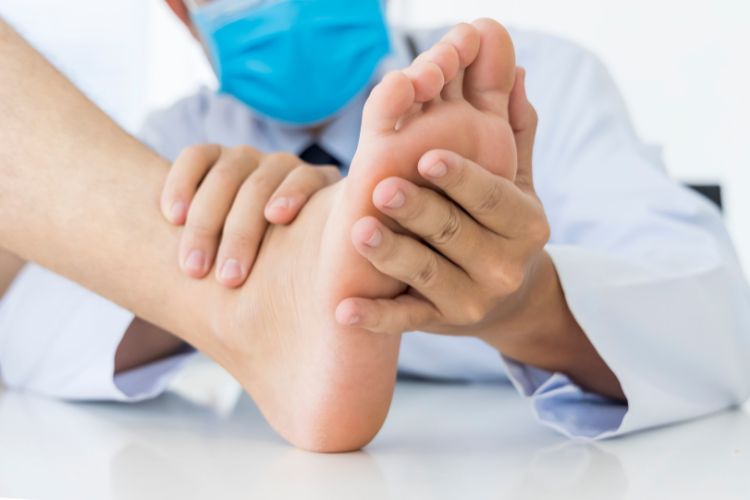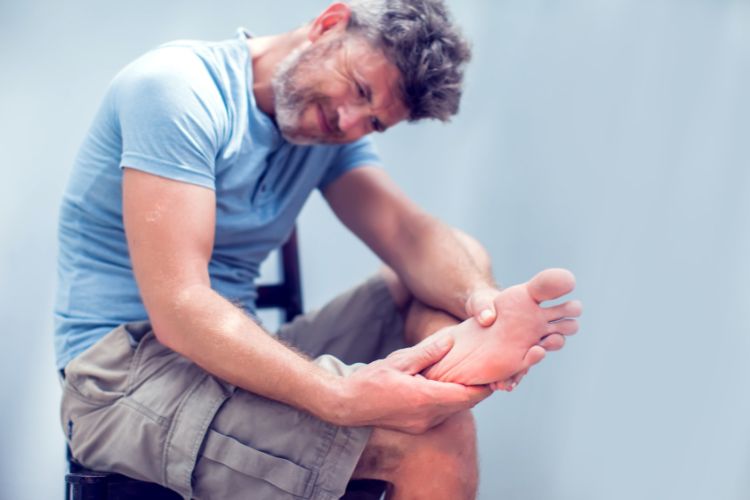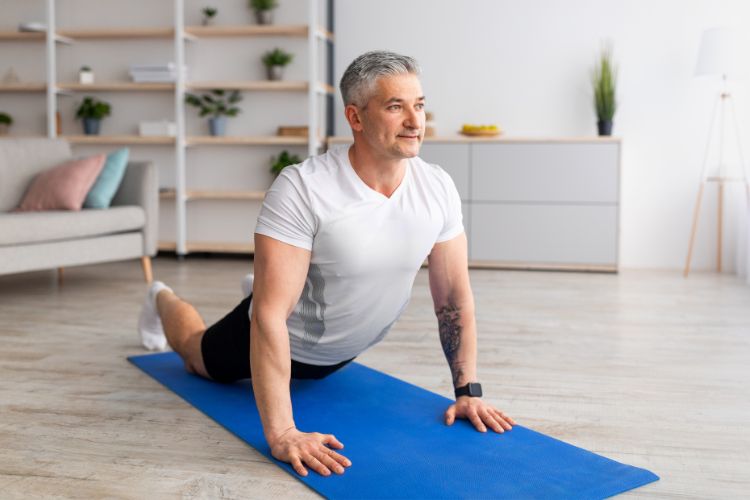As we age, the human machine begins to tell us things. In many cases, those things the body tells us are silent, blind, or tasteless. In others, the ways the body talks to us are louder in the form of physical pain. Physical pain in the older demographic is very common and is to many just a state of the body aging and breaking down. When cells go, pain can happen, it is a simple scientific fact of life. We know that as people age, those painful statements increase in quantity.
It is estimated that as many as 25 percent of the European population over the age of 65 is living with pain, or trying to experience pain-free living after 60. It is a difficult thing emotionally and physically to go through, and every human who lives past the age of 60 has to deal with it.
First, you deal with the chronic anxiety or depression that is associated with consistent pain. You also have to deal with the emotional burden that getting older has on you, and every human feels this. You haven’t lost control here. Learn how to enjoy pain-free living after 60 right here and get your life back.
Understanding the Sources of Pain
As the body ages, our physical health begins to show the aging process. Our skin changes, our diets change, our mobility can change, everything changes. When our bodies change, our daily lives change. We are more at risk of falling and having accidents that can cause pain.
We are also more at risk of diseases that cause pain. Many hospital visits from the elderly are caused by falls or accidents that are a direct result of aging and mobility issues. At the same time, our bodies are going to experience more physical problems such as back pain, stroke, arthritis, and diseases like diabetes or heart disease. All of these issues will be sources of pain and are very common after the age of 60.
For pain-free living after 60, you want to be in control of your everyday life, and your medical history. Taking control of pain after 60 means that you are checking in with your doctor a little more than you used to, watching your lifestyle to prevent slips and falls, and staying on top of things that will keep you healthy, like diet and exercise. In addition to accidents and illness, our bodies slow down the digestion process as we age, and our metabolism changes.
When our metabolism changes, our body shapes will change. Additionally, the medication that we take is absorbed differently. This will impact any pain management plan that your doctors will want to consider for you. At the same time, cognitive abilities can decline, which makes it more difficult to report pain and develop strategies for pain-free senior living.

Holistic Approaches to Pain Management
If you are trying to develop a life where you are living without pain in your 60s, there are things that you can do in addition to keeping in touch with your doctor. There are many different strategies that you can use at home and in your daily life that will help you to enjoy pain-free living after 60 as much as possible. You can incorporate lifestyle changes and dietary changes into your life, and add more exercise. Exercise can be an incredible tool for helping to release endorphins from the brain that help to alleviate pain, but it can also help to heal areas where pain is causing you a big problem.
There are certain foods that you can enjoy that have pain-relieving properties that can help you to enjoy pain-free living. A diet that is high in fruits, vegetables, and whole grain fibers will help you to enjoy pain-free living. Many of these foods are not only healthier to eat but have anti-inflammatory properties that will help your body fight off disease and pain. Other foods that have anti-inflammatory properties include avocados, olive oil, seeds or nuts, dark chocolate, and some herbs and spices such as ginger and turmeric.
Conversely, there are some foods to avoid or minimize when you are trying to stay pain-free. Watch the amount of sugar in the drinks that you purchase and in your coffee and tea. You also want to watch the amount of white grains with white bread, rice, and pasta that you are eating. Fried or processed food should be avoided as that will increase your inflammation. Alcohol should be limited, as this can increase your chances of falling and causing more pain and injury.
You can also incorporate holistic wellness strategies for pain-free senior living. Join a community center or gym and take up new classes like Tai Chi or yoga. These are exercises that are low impact and help you to focus on your breathing and spiritual centers. The act of mindfulness can help you to stay in the present moment, and worry less about what is going on around you, and these exercises can help you to develop that and live more pain-free.
The Role of Medical Intervention
Medication is a necessary tool when it comes to living a pain-free life in your 60s. Many pain relievers are safe for every age, and you will want to work with your doctor to ensure that you are taking the right kind and the right amount. At the same time, kidney function will change as you age, and this means that you will experience a less effective absorption and removal of the medication. Your kidneys can also suffer from certain kinds of medication, such as non-steroidal anti-inflammatories.
Only your doctor can help you to understand what the best medication is for you. You will also experience lower mass in your liver, which is another critical organ for medication absorption and filtration. The liver experiences slower blood flow as well, making it more difficult for some medications to be broken down appropriately. Stomach acid levels will also change and this makes taking medication complicated.
Most doctors will start with lower doses of medication unless the pain is indicated otherwise. Despite the changes in our bodies as we age, most seniors can still take the same kinds of medication that others can, but doses need to be monitored by your doctor. At the same time, many doctors are hesitant to prescribe a lot of pain medication to people over the age of 60 due to the wide range of complications that can result. Still, it would be best if you had professionals involved in your care to ensure that pain does not interfere with or disrupt your life.
Pain medication isn’t the only method of pain management. In addition to starting with lower doses of medication, your doctor can help with referrals to other therapies. You may want to try chiropractor’s services or physical therapy to help heal your muscles and body and alleviate localized pain. You may also want to consider many natural therapies at home that can help keep you comfortable when you are suffering.
Many studies indicate that as much as 60 percent of the population that is over the age of 60 will suffer from pain. With chronic or consistent pain comes the problems of the toll that it takes on the psyche and emotional health. There is a wide body of evidence that links mental illness or mental health issues with chronic pain. The best way to avoid this is by having a medical approach to your pain as early as you possibly can.

Mental and Emotional Well-being in Pain Management
Research indicates that as much as 30 percent of the population that is suffering from chronic pain is also suffering from depression or related mental issues like anxiety. Approximately 13 percent of the elderly population is suffering from chronic pain and a mental issue at the same time. Chronic pain takes an emotional toll. It makes us angry, stressed out, and jumpy because we can not relax and feel better over an issue that we have no control over.
There’s more to it than that though, there’s a medical basis to the mental health complications that come with chronic pain. When our bodies are suffering from inflammation anywhere, our brains process our hormones and emotional centers differently. It is important to develop holistic strategies for pain-free senior living that can help you to enjoy your life, and feel more joy in it despite the pain you are experiencing. Develop and stay close to your support system so that you can feel love when you are feeling pain, and this helps to make these experiences more bearable.
Practical Tips for Daily Pain-Free Living
There are many things that you can do to enjoy pain-free living in your 60s, without feeling like this is a hopeless situation. You may have to live with it, but you don’t have to let it run your life. There are many natural pain relievers that you can try to help you with your pain. Add more vitamins including Omega-3 fatty acids to your day to help you to enjoy a healthier and more pain-free life.
You may also want to change the way that you sleep or change your sleep habits. With sleep comes cell division and healing. If you need more sleep, put it in your schedule. Sleep your 8 hours daily, and as you age and have more time on your hands, nap when you need to.
Take the steps to clear your mind of pain messages as well. More sleep will help, but so will tools like essential oil diffusers, massage therapy, and adding more social love into your life. Do things that you enjoy and can focus on enjoying so that you focus on your pain less. Many studies indicate that those in their 60s who add more enjoyable activities to their lives will experience less pain, and better mental health overall.
Senior-Friendly Exercises for Pain Relief
There are many exercises that you can take to enjoy a pain-free life or to help you with a pain-free life. Low-impact exercises like walking and swimming will help to keep both your mind and body active. Add a few exercises into your everyday life to help keep the blood flowing and those pain-relieving endorphins work in your favor. There are many things you can do right from your chair or couch that can help like leg lifts and warmups that will help you to keep your mobility moving.
Some exercises like squats can be performed without weights and help you to enjoy a pain-free life and stay in shape. Stand behind a chair and lower yourself slowly to build strength in muscle groups that may be causing pain. Leg lifts in front of you or to the side can also help to keep your body active and strong when you are dealing with pain. Push-ups against a wall will also help those with back pain as it will strengthen your core, arms, and your back in time.
Cope With Pain
The most common cause of pain in those over 60 is the process of aging. Additionally, that process could make people more susceptible to falls and accidents which cause injury that results in pain. There are many natural remedies for pain management, such as heating pads, low-impact exercise, and hobbies like yoga or Tai Chi. At the same time, you need to stay in touch with your doctor and maintain a healthy lifestyle when you are developing strategies for pain-free living.
